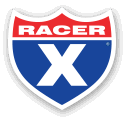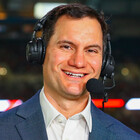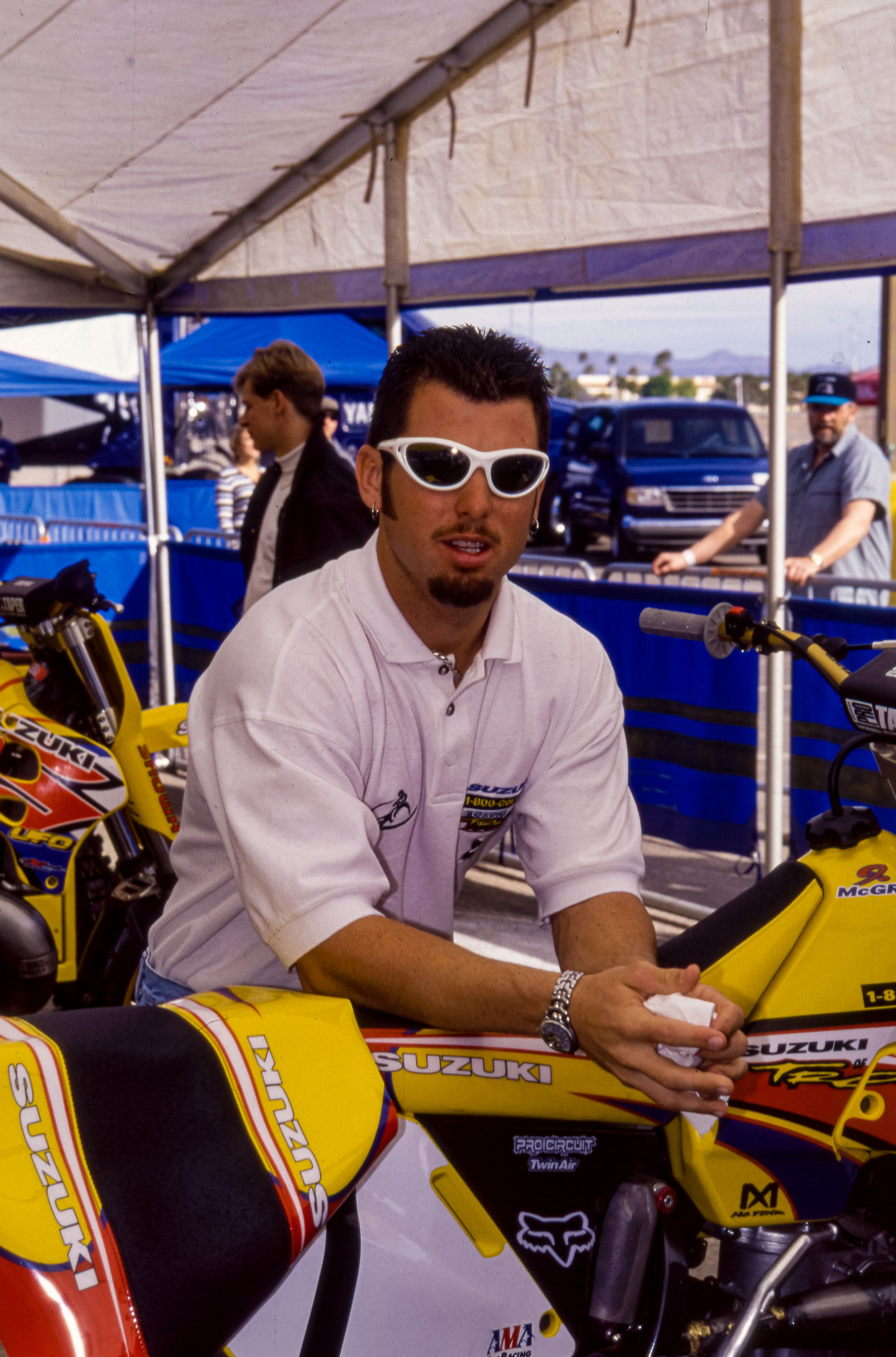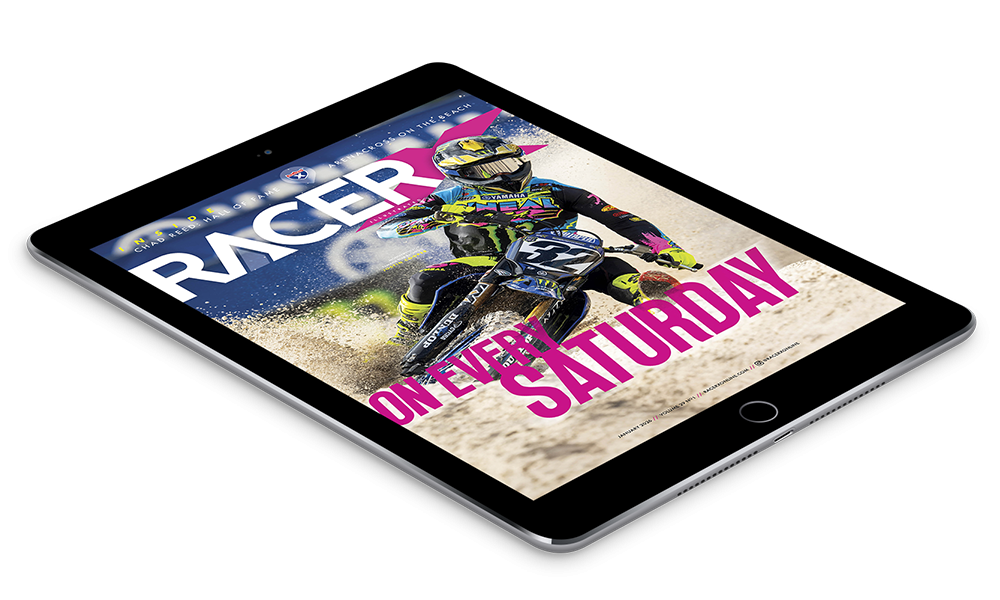Jeremy McGrath is the King of Supercross, winning seven championships in his first eight seasons in the premier class. The one year he didn’t win? Well, it was probably the most interesting season of all!
Think about this. McGrath had just dominated the sport like never before while riding for Team Honda, the most dominant team in the sport. In 1996, he nearly ran the table for the first perfect season in AMA Supercross history, winning 14 of 15 rounds. He was expected to sign a new deal with Honda and dominate again for 1997. Then, suddenly, about a week before the season begins, McGrath split with Honda and switched to Suzuki, a brand that had only won the title one time ever, and that was 16 years prior!
Just imagine, for example, Jett Lawrence making a team switch a week before Anaheim 2025. Think of how wild that would be.
For McGrath, it all came down to Honda’s radical new 1997 CR250R, the first mainstream motocross bike to use an aluminum frame. He spent the off season trying to adjust to the bike and figure out a new contract, and things weren’t coming together.
“I remember the exact moment like it was yesterday,” McGrath told us on a recent episode of the Leatt Re-Raceables podcast. “We did some testing on the 1997 [Honda] CR, the new aluminum frame was coming out. We tested at this place in the desert where Honda had a private testing facility. I wasn’t getting along with the bike. Then we did a race in Japan, I busted my ass, nice scar on my chin from that race. I remember being there on my birthday so that was mid-November. Then we went home and thank goodness by chance we went to Glen Helen to do some outdoor testing and just get more initial feelings on the bike. It was like I had forgotten how to ride! I had won a lot of motocross races that year. Then I went to Glen Helen, and I was like, 'What happened?' That particular day, I just remember the bike would go into the rut and just shake violently and pop you right out of it. I remember telling my dad, 'We’ve got to do something different. I can’t ride this bike.' Literally a week later I was no longer a Honda guy, and I was riding a Suzuki.”
Suzuki already had a factory 250 team for ’97 with star riders Mike LaRocco and Greg Albertyn. The brand was starting a major rebuild, with Roger De Coster taking the helm in 1995 and trying to bring the brand back to old heights. Now Suzuki suddenly had the best rider in the world, too.
“I wasn’t really a factory guy, more of a factory support guy,” said McGrath, who pooled money together from sponsors like Suzuki of Troy, No Fear, and more.
“I was pretty pumped when I first got on the bike,” said McGrath of his first try on the RM250. “I thought the chassis was good. It didn’t have the motor of my Honda, and the clutch wasn’t that great, that’s where Wayne Hinson came in. Wayne and Ron Hinson came in and did a lot of work on the clutch. I think the more worrisome part at the time was those conventional forks, but I didn’t know it at the time. When you ride on a hardpack track, the things you feel on hardpack don’t really show up as much as they do on a soft terrain track.”
Upside down forks had become standard fare in motocross bikes since the early 90s, but Suzuki tried to return to conventionals in 1995. Conventional forks are known for a plush feel, but they also flex more, especially in aggressive, supercross-style racing. As a fix, the factory team kept bolting on stronger components, and by ’97 the race bikes even had a brace above the front tire, locking the two fork legs together. It still wasn’t gelling with McGrath.
“Under braking those things were all over the place, especially if you had grip. We grew up on upside down forks, not conventionals.”
At mid-season, McGrath, still winless, showed up with upside down forks on his Suzuki.
“Let’s clear one thing up real quick, Suzuki didn’t give me those (upside down) forks,” McGrath said. “In fact, I had to tell Roger, 'This is what I’m doing, and I don’t care what you say.' I love Roger, but that didn’t really go over too well! But those forks, trust me when I say this….my practice bike from the year before, a 1996 Honda CR, was sitting in my garage without forks on it. They were on my race bike! They were not factory forks. They were production 1996 forks that Showa took care of and dialed in.”
What’s wild is, McGrath chased the ’97 title for the rest of the season with only one set of forks.
“I would ride with them during the week and bring them to the races, just like going to a European supercross, you’d fly with them in a gun case. We put a lot of faith in the airlines at that time, I guess!”
McGrath also had his own deal going for the engine and clutch, trying to fix the issues he noticed in his initial test.
“My bike was a Pro Circuit motor,” he said. “Mitch worked his ass off to make that thing run good, and we did. We tested and tested and tested. The next weak link was the clutch. Wayne Hinson and those guys got me really dialed in on the clutch. We did have a problem one week where the motor didn’t go, and I think it was a clutch problem. Had the clutch not broke at the one race, we easily win the championship. Easily.”
Finally, at the eighth race of the season in Minneapolis, McGrath took his first win on a Suzuki. Yamaha’s Doug Henry and Kawasaki’s Jeff Emig were battling for the points lead for the first half of the season, but no one had reeled off a big win streak. McGrath still had a shot to dig out the title even after so many early-season issues.
“I think that was sort of the attitude, it’s good enough now and I can win on this bike,” he said after the Minneapolis win. “There were still some glaring issues. I just don’t think Suzuki was ready for a “Jeremy McGrath” at that point, machine wise. And for whatever reason, I mean LaRocco was regarded as one of the top riders at the time. So why weren’t they (already) listening to him? Why wasn’t he able to produce a good race bike?”
It would take years for Suzuki to finally build a bike and race program that would win at the top of the sport. Through the years De Coster and his right-hand man, Ian Harrison, have spoken about the work it took to communicate their needs to Japan and to change the culture of the company back into a championship winner. Harrison admits that getting McGrath right before the ’97 season, before it was truly ready, set the team’s reputation back quite a bit.
Still, McGrath was so good that he nearly won that ’97 title anyway!
“One thing I will say is that I really loved that bike at the end of the series,” he said. “You could ride it as hard as you wanted and the chassis could handle it, no matter what the conditions were. It’s just a shame it took me eight races to get the thing working right. Had I had a few weeks before the beginning of the season to test we would have had it dialed in right away and I think I would have won the title going away, easy.”
Related Reading: Fourteen and One, Jeremy McGrath's 1996 Season.
Fans from the era can forever remember how this got away. McGrath got taken out by his old Honda teammate Steve Lamson at round one. He had that one race with a mechanical due to the clutch. He suffered a flat tire in Charlotte. Tipped over while leading in Pontiac. Hurt his foot right before the season finale in Vegas. It wasn’t meant to be. Plus, Emig was solid and consistent under pressure all season. He won the one title in eight years that McGrath didn’t.
McGrath would switch to a Chapparal Yamaha for the 1998 season and begin another run, with three-straight titles, which begs the question, if he won that 1997 title on the Suzuki, could he actually have left?
“I can look back and say I’m not sure,” he says. “What would I have done? Well, look, Sexton just did it! (Won the AMA Supercross Championship and then switched teams.) But you’re right. It might have changed the trajectory of all of this stuff. I won three more supercross titles (after switching to Yamaha in 1998). Do I think I could have won three-straight supercross titles (on a Suzuki)? Look at the way the dominoes fell. When I left Suzuki and went to Yamaha, (Ezra) Lusk left Yamaha and he went to Honda. Lusk, I think was definitely regarded as the guy who was the best guy or the most competition for me in the coming years. If I was on a Suzuki and Lusk stayed on a Yamaha…I might have had my hands full. We know now that he (Lusk) had a lot of trouble finishing a series off, strategy wise, having crashes or whatever. But had he stayed on a Yamaha, it probably would have been easier for him to get more wins and battle for a championship. The Honda was so violent at the time, it took him three years to get that thing working. So that did me a favor.”
Listen to Jeremy talk about the 1997 Minneapolis Supercross on Re-Raceables:
McGrath doesn’t look back at 1997 as a complete failure. It reignited a fire to get the title back, and that might have added years to his career. Also, the Suzuki deal unlocked a huge jump in win bonuses in his new contract. McGrath’s Suzuki deal paid a whopping $50,000 per race win. His previous Honda deal, still based on his rookie contract, paid only $8,000 per win. That means McGrath made more bonus money in 1997 with two race wins and several podiums than he did when he won 14 races the season before! It pushed the whole sport to a higher tier, money wise, which includes today, where riders are rumored to make over 100k per win in team bonuses.
McGrath never fully returned to a standard factory team. He rode a factory Yamaha under the Chaparral tent starting in ’98, and would later start his own team, riding Yamahas and briefly KTMs.
“That whole (1997) thing came together thanks to (Suzuki’s) Mel Harris. Mel and my dad were friends, and that really helped me do what I wanted. I love and respect Roger, but he wasn’t sitting on my bike, I was. Eventually we got it pretty good, and we were running at the front.”
| Position | Race | Class | Date | Bike |
|---|---|---|---|---|
| 4 | Supercross Irving | 250SX | April 26, 1997 | Suzuki |
| 7 | Supercross Charlotte | 250SX | April 19, 1997 | Suzuki |
| 4 | Supercross Pontiac | 250SX | April 12, 1997 | Suzuki |
| 1 | Supercross St. Louis | 250SX | April 5, 1997 | Suzuki |
| 2 | Supercross Orlando | 250SX | March 29, 1997 | Suzuki |
| 3 | Supercross Houston | 250SX | March 22, 1997 | Suzuki |
| 1 | Supercross Minneapolis | 250SX | March 15, 1997 | Suzuki |
| 3 | Supercross Daytona | 250SX | March 8, 1997 | Suzuki |
| 2 | Motocross Gatorback Cycle Park | 250MX | March 2, 1997 | Suzuki |
| 3 | Supercross Atlanta | 250SX | February 22, 1997 | Suzuki |
| 9 | Supercross Indianapolis | 250SX | February 15, 1997 | Suzuki |
| 2 | Supercross Seattle | 250SX | February 1, 1997 | Suzuki |
| 2 | Supercross Tempe | 250SX | January 25, 1997 | Suzuki |
| 3 | Supercross Los Angeles 2 | 250SX | January 18, 1997 | Suzuki |
| 15 | Supercross Los Angeles 1 | 250SX | January 11, 1997 | Suzuki |
Main image by Jim Talkington








